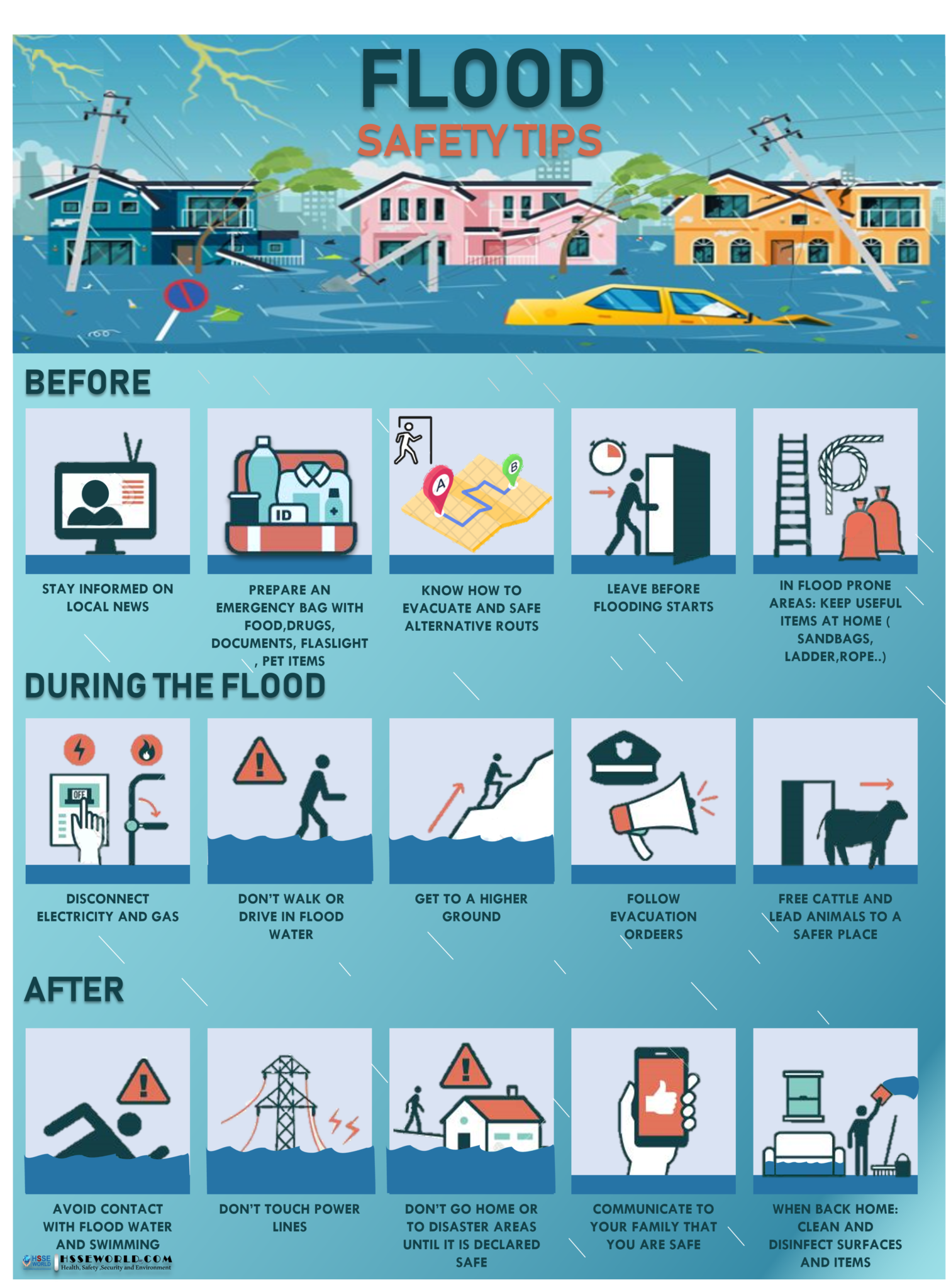Surviving A Flash Flood Emergency: Essential Safety Tips

Table of Contents
Recognizing the Signs of an Impending Flash Flood Emergency
Understanding Flash Flood Risk Factors
Flash floods are a serious threat, and understanding the contributing factors is the first step in preparedness. Several factors increase the risk of a flash flood emergency.
- Heavy rainfall in a short period: Intense downpours, particularly exceeding 2 inches of rain in a short time (e.g., 6 hours), can overwhelm drainage systems and lead to rapid flooding. Areas with steep slopes or limited vegetation are especially vulnerable. The sheer volume of water overwhelms natural and man-made drainage, leading to rapid rises in water levels.
- Overflowing rivers or streams: When rivers and streams receive excessive rainfall, they quickly swell beyond their banks, causing widespread flooding in nearby areas. This is particularly dangerous in areas with low-lying land near waterways.
- Clogged drainage systems: Urban areas with inadequate or blocked storm drains and culverts are more susceptible to flash floods. Debris like leaves, litter, and construction materials can obstruct the flow of water, exacerbating the flooding.
- Nearby construction sites altering water flow: Construction projects that disrupt natural drainage patterns can significantly increase the risk of flash floods. Changes to the landscape can redirect water flow, causing unexpected flooding in previously unaffected areas.
- Official weather warnings: Paying close attention to official weather warnings from the National Weather Service (NWS) is crucial. These warnings, including flash flood watches and warnings, are your primary source of information about impending danger. Ignoring these alerts can be life-threatening.
Monitoring Weather Reports and Alerts
Staying informed is critical for avoiding danger. Regularly monitor weather reports and alerts to anticipate potential flash flood emergencies.
- Importance of weather apps: Download reliable weather apps on your smartphone that provide real-time updates, including rainfall forecasts and flood warnings. Many apps offer customizable alerts for your specific location.
- Signing up for emergency alerts: Sign up for emergency alerts from the NWS and your local authorities. These systems provide immediate notifications of impending severe weather, including flash flood warnings and evacuation orders.
- Understanding different warning levels: Familiarize yourself with the difference between a flood watch and a flood warning. A watch means conditions are favorable for flooding, while a warning signifies that flooding is occurring or is imminent. Act immediately upon receiving a warning.
Evacuation and Seeking Shelter During a Flash Flood Emergency
Developing an Evacuation Plan
Having a well-defined evacuation plan is crucial for your safety.
- Identifying escape routes: Identify at least two escape routes from your home and workplace, preferably leading to higher ground. Familiarize yourself with these routes in advance.
- Designating meeting points: Establish designated meeting points for your family or group in case you become separated during a flash flood. Choose locations that are safe and easily accessible.
- Packing an emergency kit: Prepare a flash flood emergency kit including essential supplies like water, non-perishable food, a first-aid kit, flashlights, batteries, important documents, medications, and warm clothing. Keep this kit readily accessible.
Safe Evacuation Procedures
When a flash flood warning is issued, act swiftly and decisively.
- Moving to higher ground immediately: Evacuate to higher ground as quickly and safely as possible. This is the single most important action you can take during a flash flood.
- Avoiding flooded areas: Never attempt to drive or walk through floodwaters. The depth and current can be deceivingly dangerous. Even a small amount of flowing water can sweep a person or vehicle away.
- Never driving through floodwaters: Floodwaters often hide unseen dangers, such as downed power lines, debris, and deep potholes. Driving through floodwater can be fatal.
- Heeding evacuation orders from authorities: Obey all evacuation orders issued by local authorities. They are prioritizing your safety.
Post-Flash Flood Emergency Safety and Recovery
Assessing Damage and Reporting
After the floodwaters recede, prioritize safety and report damages.
- Checking for structural damage: Carefully inspect your property for structural damage. Look for cracks in walls, foundations, and ceilings. Do not enter a building if structural integrity is compromised.
- Reporting damage to local authorities: Report any damage to your property and infrastructure to your local authorities. This allows them to assess the overall impact and allocate resources for recovery.
- Avoiding contact with floodwater: Floodwater is often contaminated with sewage, chemicals, and other hazardous materials. Avoid contact to prevent illness or injury.
- Seeking medical attention for injuries: Seek medical attention for any injuries sustained during the flash flood or while cleaning up afterwards.
Cleaning and Restoration
Cleaning up after a flash flood requires caution and proper procedures.
- Wearing protective gear when cleaning: Wear protective gear, including rubber boots, gloves, and a mask, when cleaning up flood damage. This protects you from contaminated water and debris.
- Discarding contaminated items: Discard any items that have been in contact with floodwater, especially those that cannot be thoroughly cleaned and disinfected.
- Utilizing professional services if needed: Consider hiring professional services for mold remediation and flood damage restoration. They possess the expertise and equipment for safe and effective cleanup.
- Ensuring safe disposal of hazardous materials: Dispose of hazardous materials, like damaged batteries and chemicals, according to local regulations.
Conclusion
Flash flood emergencies demand swift action and preparedness. By understanding the signs of an impending flash flood, developing a robust evacuation plan, and taking appropriate post-flood safety measures, you significantly increase your chances of survival. Remember to regularly review your family's flash flood emergency plan and stay informed about weather alerts to minimize risk. Don't hesitate to reach out to your local authorities for information and guidance on flash flood preparedness in your area. Stay safe and prepared for any flash flood emergency.

Featured Posts
-
 The Future Of Healthcare Analysis Of The Philips Future Health Index 2025 On Ai
May 25, 2025
The Future Of Healthcare Analysis Of The Philips Future Health Index 2025 On Ai
May 25, 2025 -
 Toto Wolff On George Russell Dismissing Underrated Claims And Praising The Driver
May 25, 2025
Toto Wolff On George Russell Dismissing Underrated Claims And Praising The Driver
May 25, 2025 -
 Housing Finance And Family Fun What To Expect At The Iam Expat Fair
May 25, 2025
Housing Finance And Family Fun What To Expect At The Iam Expat Fair
May 25, 2025 -
 Addressing The Housing Crisis A Balanced Approach Inspired By Gregor Robertson
May 25, 2025
Addressing The Housing Crisis A Balanced Approach Inspired By Gregor Robertson
May 25, 2025 -
 Yurskiy K 90 Letiyu So Dnya Rozhdeniya Velikogo Aktera
May 25, 2025
Yurskiy K 90 Letiyu So Dnya Rozhdeniya Velikogo Aktera
May 25, 2025
Latest Posts
-
 Italian Open Alcaraz And Sabalenkas Winning Starts
May 25, 2025
Italian Open Alcaraz And Sabalenkas Winning Starts
May 25, 2025 -
 Alcaraz And Sabalenka Triumph In Italian Open Debut
May 25, 2025
Alcaraz And Sabalenka Triumph In Italian Open Debut
May 25, 2025 -
 Carlos Alcaraz And Aryna Sabalenka Dominate At The Italian Open
May 25, 2025
Carlos Alcaraz And Aryna Sabalenka Dominate At The Italian Open
May 25, 2025 -
 Arrest Of Dave Turmel Canadas Most Wanted In Italy
May 25, 2025
Arrest Of Dave Turmel Canadas Most Wanted In Italy
May 25, 2025 -
 Canadas Most Wanted Fugitive Dave Turmel Apprehended In Italy
May 25, 2025
Canadas Most Wanted Fugitive Dave Turmel Apprehended In Italy
May 25, 2025
